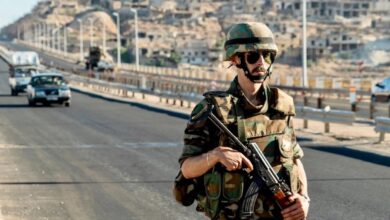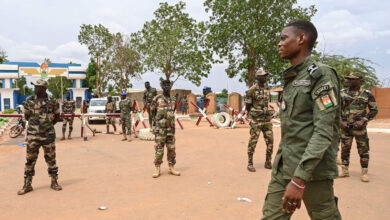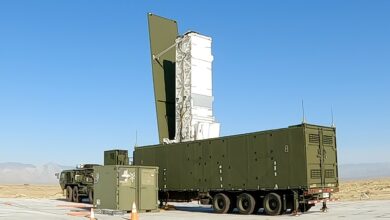
More than a year after the Islamic State’s territorial defeat in Syria, the status of several hundred foreign IS fighters from Southeast Asia remains shrouded in uncertainty.
Since former IS leader Abu Bakr al-Baghdadi stood at the pulpit of a mosque in Mosul and declared a so-called caliphate over large swathes of northern Syria and western Iraq in 2014, approximately 700 Indonesians and 100 Malaysian nationals, among other regional nationals, have traveled to the theatre to join IS. But following the collapse of IS’ operations in late 2019, an April 2020 Interpol report warns the “flow of militants from Southeast Asia to the Middle East to join terrorist groups, has now been reversed.”
Some Southeast Asian foreign terrorist fighters (FTFs) or deportees have either returned or attempted to return to establish links with militant groups around the region. While it is too early to fully gauge the security impact on Indonesia, Malaysia, and to some extent the Philippines, a small group of returnees and deportees has already participated in high-profile terrorist attacks.
As such, the near-term risk posed by highly motivated and battle-hardened returnees in raising the attack capabilities of regional jihadist groups needs to be further assessed, along with the prospect of them relocating to other conflict theaters around the region.
Status of Southeast Asian Foreign Terrorist Fighters
Many Southeast Asian FTFs continue to be detained in Syria. Local reports in Indonesia and Malaysia indicate that most surviving IS-linked Southeast Asians in the Middle East are based in north-eastern Iraq in facilities such as the Al-Hol camp, or Al-Hasakah Prison. Nonetheless, these reports are incomplete with a handful of individuals unaccounted for.
Amidst the ongoing COVID-19 pandemic, there are growing concerns the Syrian forces could lose control of these camps and prisons. The health crisis has severely stretched the government’s capacity, which has resulted in a reduction of resources devoted to counterinsurgency operations and prison management at the Al-Hasakah Prison facility. In March this year, two prison breaks were staged at the prison, with an undisclosed number of IS militants managing to escape. There were also reports late last year of several dozen Indonesian FTFs escaping Syrian custody.
ISIS terrorists managed to take over the first floor in Hasakah prison removing internal walls& doors.
some of them managed to escape and our forces are searching to capture them.
anti-terror forces are dealing with the situation in the first floor to finish riots in the prison.— Mustafa Bali (@mustefabali) March 29, 2020
Additionally, some regional FTFs who evaded capture have joined IS-Khorasan in Afghanistan. Reports indicate that an unconfirmed number of Indonesians managed to smuggle themselves into Afghanistan from Iraq, via the Iranian border.
Authorities continue to face problems in pinpointing the location and identity of their nationals who traveled to Syria to join IS, due to issues such as inadequate documentation. The verification and identification processes used by many governments in the region to screen returnee nationals have also not improved greatly over the past year. Many who traveled to Syria did so without valid documents. In Southeast Asia, these issues have complicated efforts by governments to repatriate their citizens. Concerns have also been raised of FTFs returning illegally, without warning and detection.
Relocating to Mindanao
In addition to their home countries, Mindanao in the Southern Philippines is a potential alternative destination for returning Southeast Asian FTFs. While returnees have not been detected in the Philippines more recently, the influx of FTFs into the Philippines before the Marawi siege in 2017 demonstrated the appeal of the area as an alternate jihadist theater. Even after the Marawi siege, Mindanao did not lose its appeal among FTFs as fighters from Europe, the Middle East, North Africa, and South Asia continued to enter the region.
Today, militancy persists in various parts of Mindanao. Notably, the Hajan Sawadjaan-led IS-aligned faction of Abu Sayyaf continues to actively recruit FTFs and conduct operations along the Sulu Archipelago, despite movement restrictions imposed by the government to cope with the spread of COVID-19. The ongoing stalemate between the Armed Forces of the Philippines and IS forces in the Patikul municipality creates an opportunity for returnees to join the fray.

Radical individuals deported from Turkey have also found their way to Mindanao in recent years. A notable example is the Indonesian couple, Rullie Rian Zeke and Ulfah Handayani Saleh, who were deported from Turkey in 2017 while attempting to perform hijrah to Syria to join IS. One year later, in December 2018, the couple proceeded to enter the Philippines illegally, following which they conducted the suicide attacks at the Jolo Cathedral, on Sawadjaan’s command.
Migrating to Southeast Asia Amidst Border Closures
Due to the COVID-19 pandemic, many countries have closed their borders to prevent the import of infected patients. However, this is unlikely to hinder returnees, including IS militants, from re-entering Southeast Asia. The region is plagued with porous borders. Three illegal routes often used by the militants to travel without detection are around the Riau Islands, Sulu Archipelago, and the Sangihe Islands.
The abovementioned terrains are archipelagic and hinder enforcement efforts. During the Marawi siege in 2017, several FTFs traveled to Marawi across the Sulu Archipelago or the Sangihe Islands. The challenge in these areas lies in the high human traffic flows between Indonesia, Malaysia, and the Philippines.
In 2017, Indonesians Faisal Abu Bakar and Ali Misron, and Malaysian Nor Azmi Zahyi, were intercepted when they attempted to traverse the archipelago to support IS forces in Marawi. Although they failed to enter Marawi, their attempts demonstrated the viability of smuggling FTFs through these routes. Hence, the challenge is not only to detect illegal routes but also to strengthen the security in the legal routes in the region.
Conclusion
Going forward, IS activity will continue to unify jihadists around Southeast Asia, especially those in Indonesia, Malaysia, and the Philippines. Transnational collaborations serve as a significant force multiplier for jihadist activity in the region. Militants are likely to have been buoyed by the impact achieved by major cross-border operations in recent years, including the 2017 Marawi siege and the 2019 Jolo attacks in the Southern Philippines, in which Indonesian and Malaysian militants participated.
There continue to be opportunities for returnee militants to enter conflict theaters around the region despite recent border closures. Amongst them, the Patikul municipality in Mindanao appears to be an attractive location. The archipelagic terrain in Southeast Asia and high human traffic along various smuggling routes offer FTFs avenues to enter Mindanao.
Amidst the COVID-19 pandemic, measures to minimize the penetration of FTFs into the region must be sustained despite countries being forced to devote significant resources to address the domestic health crises. This includes bilateral and multilateral intelligence-sharing arrangements and border hardening measures.











